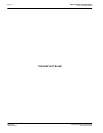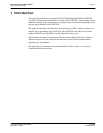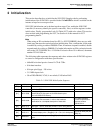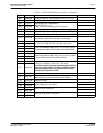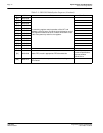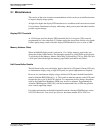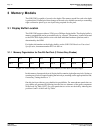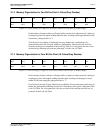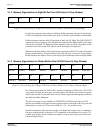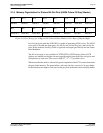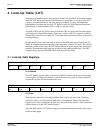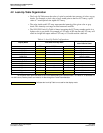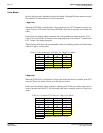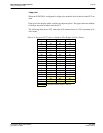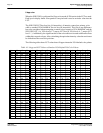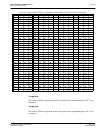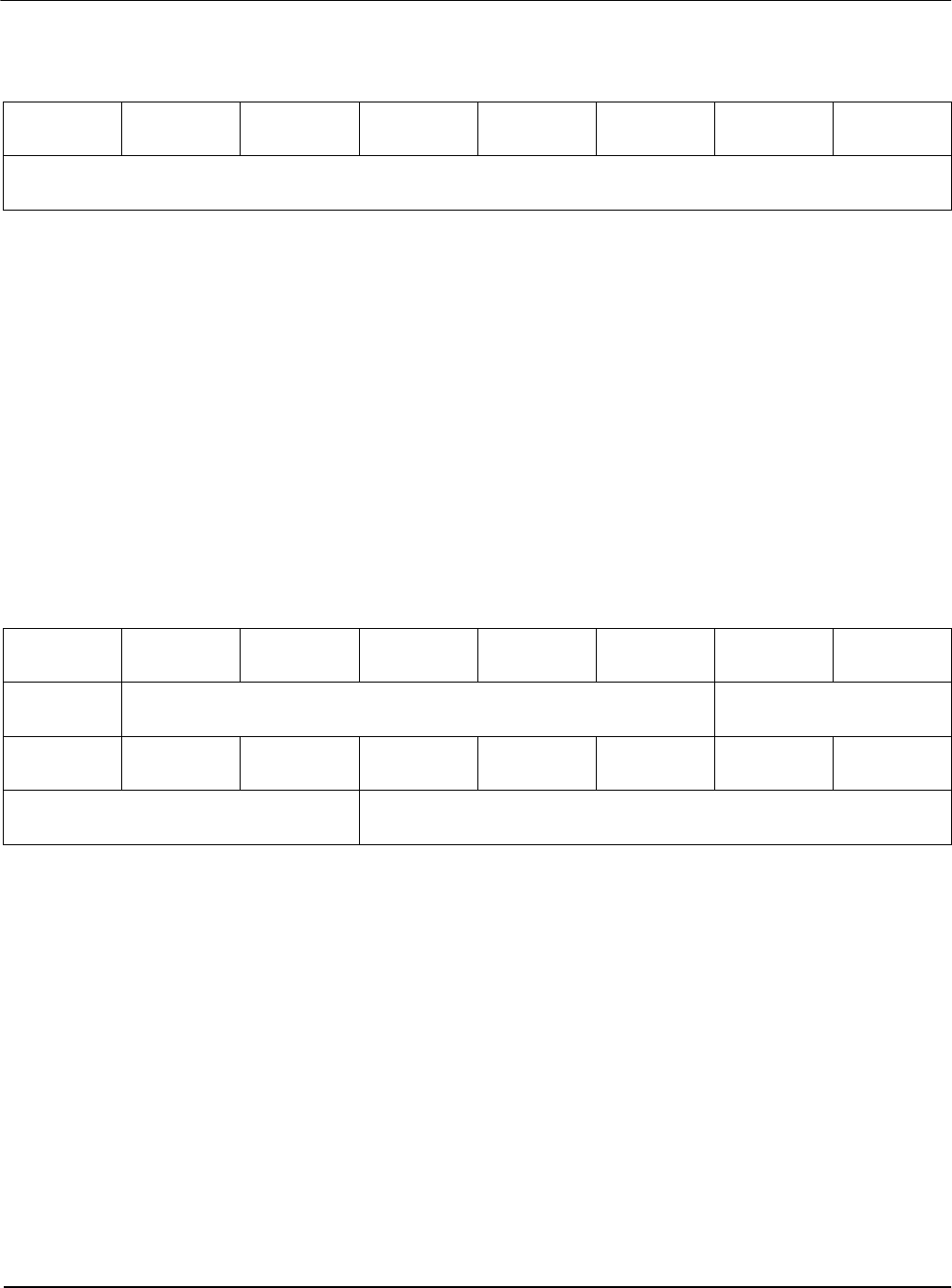
Page 18
Epson Research and Development
Vancouver Design Center
S1D13505 Programming Notes and Examples
X23A-G-003-07 Issue Date: 01/02/05
3.1.4 Memory Organization for Eight Bit-Per-Pixel (256 Colors/16 Gray Shades)
Figure 3-4: Pixel Storage for 8 Bpp (256 Colors/16 Gray Shades) in One Byte of Display Buffer
In eight bit-per-pixel mode each byte of display buffer represents one pixel on the display.
At this color depth the read-modify-write cycles of the lessor pixel depths are eliminated.
Each byte indexes into one of the 256 positions of the Look-Up Table. The S1D13505 LUT
supports four bits per primary color, therefore this translates into 4096 possible colors when
color mode is selected. To display the fullest dynamic range of colors will require careful
selection of the colors in the LUT indices and in the image to be displayed.
When monochrome mode is selected, the green component of the LUT is used to determine
the gray shade intensity. The green indices, with only four bits, can resolve 16 gray shades.
In this situation one might as well use four bit-per-pixel mode and conserve display buffer.
3.1.5 Memory Organization for Fifteen Bit-Per-Pixel (32768 Colors/16 Gray Shades)
Figure 3-5: Pixel Storage for 15 Bpp (32768 Colors/16 Gray Shades) in Two Bytes of Display Buffer
In 15 bit-per-pixel mode the S1D13505 is capable of displaying 32768 colors. The 32768
color pixel is divided into four parts: one reserved bit, five bits for red, five bits for green,
and five bits for blue. In this mode the Look-Up Table is bypassed and output goes directly
into the Frame Rate Modulator.
The full color range is only available on TFT/D-TFD or CRT displays. Passive LCD
displays are limited to using the four most significant bits from each of the red, green and
blue portions of each color. The result is 4096 (2
4
* 2
4
* 2
4
) possible colors.
Should monochrome mode be chosen at this color depth, the output reverts to sending the
four most significant bits of the green LUT component to the modulator for a total of 16
possible gray shades. In this situation one might as well use four bit-per-pixel mode and
conserve display buffer.
Bit 7Bit 6Bit 5Bit 4Bit 3Bit 2Bit 1Bit 0
One Pixel
Bit 15 Bit 14 Bit 13 Bit 12 Bit 11 Bit 10 Bit 9 Bit 8
Reserved Red Bit 4 Red Bit 3 Red Bit 2 Red Bit 1 Red Bit 0 Green Bit 4 Green Bit 3
Bit 7Bit 6Bit 5Bit 4Bit 3Bit 2Bit 1Bit 0
Green Bit 2 Green Bit 1 Green Bit 0 Blue Bit 4 Blue Bit 3 Blue Bit 2 Blue Bit 1 Blue Bit 0



